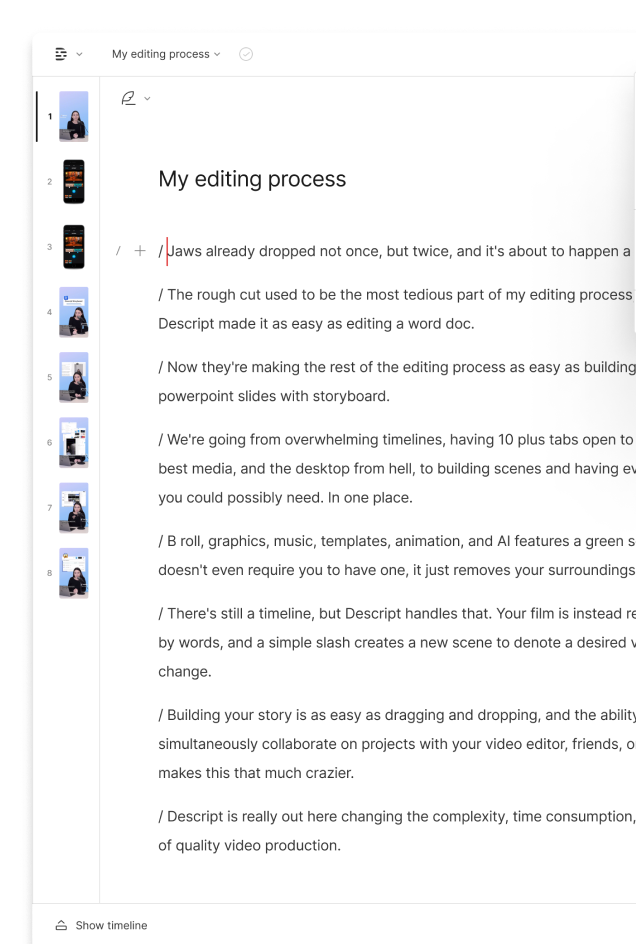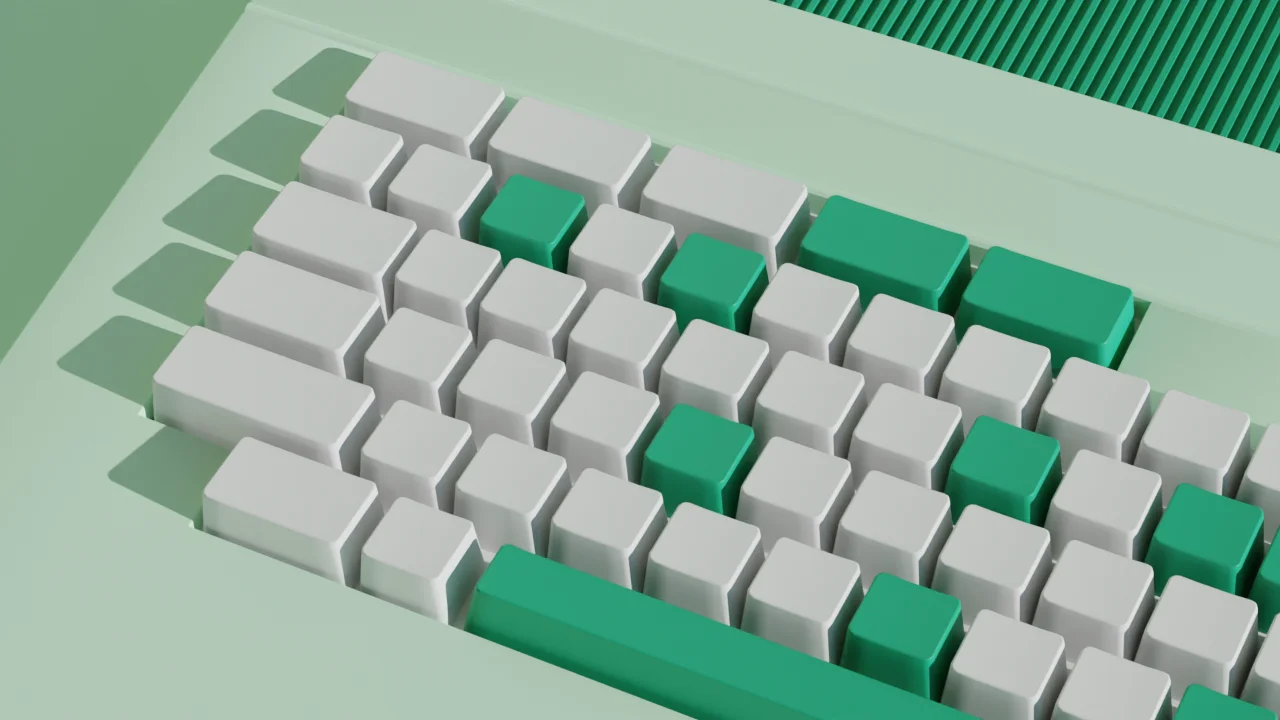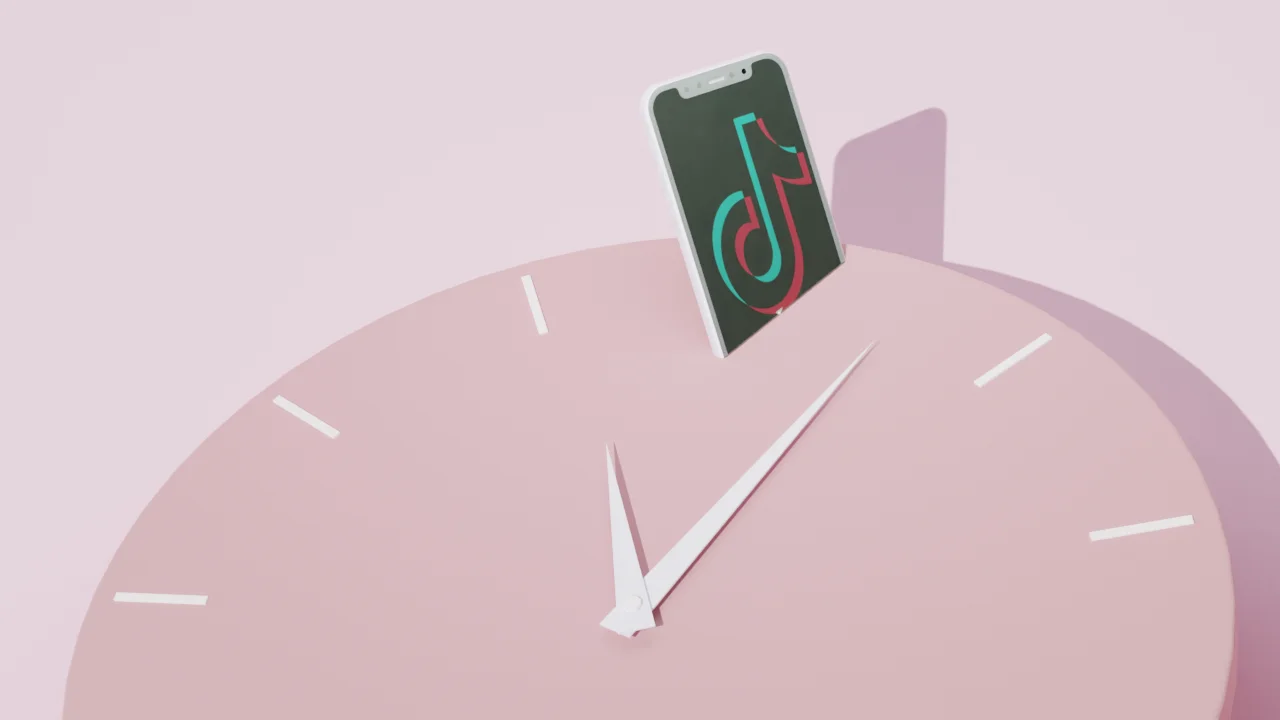What type of content do you primarily create?




Unless you are immune from shame, doing comedy in public takes a lot of courage. It’s hard to make someone laugh, and when comedy fails, it’s painful.
If you’re going to try anyway, you’ll probably need to spend a lot of time working on your comedy and your writing, mostly by watching others who are good at it and by trying, failing, learning what didn’t work, and finding ways to do it differently.
Once you’ve got that part down, you should also either find a good editor to work with or learn to edit yourself. Editing comedy video is an art in itself, and it’s crucial to creating funny content online.
And just like writing comedy, editing comedy is both an art and a craft. The art part just requires diving in and learning what works. The craft part you can learn by mastering a few techniques. Here’s a start.
Why editing is so important to comedy
When it comes to creating a worthwhile comedy video, a funny script has to work hand-in-hand with funny edits. Even if a video clip is one shot with a bunch of jump cuts (as many YouTube sketches are), the comedy often lives in the cut. That’s because comedy depends on timing, and in the case of comedy videos, timing depends on editing. Next time you’re watching a sitcom or a funny movie, take note of how often the camera cuts away after a punchline. That’s because 1) reaction shots help jokes land and 2) staying with the speaker in those moments instead of cutting would just feel weird.
What to consider when editing comedy
The video editor is just as essential to creating funny moments as the performers and the writers are. Here are some things to keep in mind once you get into the editing room:
- The style of humor. You need to understand very precisely what’s funny about a clip so you can make appropriate edits. For example, if a video is going for cringe comedy, you’ll likely want to consider techniques like lingering on reaction shots or holding for a long time on the uncomfortable element in order to drive the punchline home.
- When a joke has run its course. The old adage “leave them wanting more” applies particularly in comedy. A great way to tell how you’re doing in that regard is to ask yourself if your video’s premise is escalating with each joke. If it’s not, you’re probably bored, and if you’re bored, your viewers will definitely be bored.
- Words vs. visuals. One of the most rewarding parts of video editing is finding ways to enhance the funny content and performers with the surroundings. While you’re reviewing footage, keep an eye out for opportunities to cut away to something absurd or unexpected — often, the funny thing is just the thing the audience could’ve never predicted.
7 tips for editing comedy clips
My colleague Lara Unnerstall is a video producer at Descript with a wealth of experience writing, performing, and creative directing comedy. She offered her thoughts on what makes for a top-quality comedy video:
- Remember that the rules of filmmaking also apply to comedy. “So many comedy videos are just two people talking, and there’s no real artistry or thought put into the actual edit,” Lara says. In other words, comics focus exclusively on the content, forgetting that sketches can also be fun videos to edit and not just single shots to be tweaked and uploaded to social media. Comedy can come from seeing a scene from an unexpected angle or focusing the viewer’s attention on an out-of-the-way element of the scene. The point is, don’t be afraid to use everything at your disposal.
- Do your research. There’s no shame in lifting techniques and editing tools from comedies (or non-comedies) you enjoy. “Watch things that you think are funny and really start to do that ‘pre-work’ before you get to the editing,” Lara says. “When you start to think about it, you will start to see those edits in everything you watch.” Take note of where and how editors cut from one part of a scene to the next, and emulate it to see if it makes sense in your own work.
- Don’t forget about sound. Bad sound can ruin a punchline or pull focus away from what’s happening onscreen. Lara recommends “making sure that the audio is really audible, that it sounds polished, that there are no distracting external sounds.” If there are, do what you can to eliminate them, and remember to make use of editing standards like room tone to make your scene feel as naturalistic as possible.
- Take your ego out of it. If you’re particularly attached to the video, you may lose your perspective on what’s actually funny. Lara puts a lot of importance on getting feedback from friends and collaborators and being prepared to cut anything that’s not working. “Not being precious about anything is super important,” she says. “I really do believe it’s the diversity of ideas that leads to a better final product.”
- Study your test viewers (but not in a creepy way). After you’ve worked on something for a decent length of time, you can get numb to it. That’s especially problematic when it comes to editing comedy. Lara combats this by showing new cuts to people who aren’t familiar with the video. “Find someone who you think represents the audience you want to reach...and literally watch their face and see where they get engaged,” she says. “Comedy is so visceral, it’s either funny or it’s not.”
- Get involved from the beginning. Your production team starts capturing funny stuff as soon as they start filming, and as someone who’s going to be sifting through all that footage, you want to make sure you have everything you need. Start thinking about the scene from the production stage or earlier. “Storyboard your stuff; think of every little shot you’re going to need and get it,” Lara stresses. Otherwise, you may find yourself in a situation where you really need a reaction shot or cutaway for a joke to land and you just don’t have it.
- Don’t panic if you’re missing something. Maybe you just don’t have that cutaway or reaction shot; it happens. That’s where you need to get creative as an editor by grabbing audio or visuals from other sources. “Think about ways that you can use sound to help tell the story,” Lara says. A well-chosen sound effect or foley offscreen can work wonders. If you’re missing a visual component, Lara recommends checking out B-roll in the public domain.












































